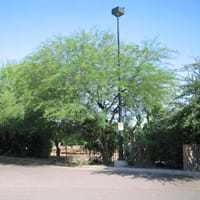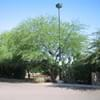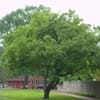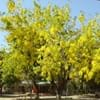Life Span
Perennial
Annual
Origin
Northeast Mexico, Southeastern United States
Middle Africa
Types
Not Available
Not Available
Number of Varieties
Not Available
Habitat
Hillside, Slopes
Moist Soils
USDA Hardiness Zone
9-11
3-9
AHS Heat Zone
Not Available
12 - 1
Sunset Zone
Not available
H1, H2, 1a, 1b, 2a, 2b, 3a, 3b, 4, 5, 6, 7, 8, 9, 10, 11, 12, 13, 14, 15, 16, 17, 19, 20, 21, 22, 23, 24
Habit
Arching/Fountain-shaped
Upright/Erect
Flower Color Modifier
Bicolor
Bicolor
Fruit Color
Brown
Orange, Gold, Orange Red
Leaf Color in Spring
Dark Green
Green, Light Green
Leaf Color in Summer
Light Green
Green, Light Green
Leaf Color in Fall
Dark Green
Green, Yellow green
Leaf Color in Winter
Light Green
Light Green
Leaf Shape
Elliptic
imparipinnate
Plant Season
Spring
Summer, Fall
Sunlight
Full Sun
Full Sun, Partial Sun
Type of Soil
Dry, Loam, Sandy
Loam
The pH of Soil
Slightly Alkaline
Acidic, Neutral
Soil Drainage
Dry
Well drained
Bloom Time
Early Spring, Late Spring, Mid Spring
Summer
Tolerances
Drought
Drought
Where to Plant?
Ground
Ground
How to Plant?
Seedlings
Seedlings
Plant Maintenance
Low
Medium
Watering Requirements
Do not water excessively
Requires a lot of watering
In Summer
Adequately
Lots of watering
In Spring
Average Water
Moderate
In Winter
Average Water
Average Water
Soil pH
Slightly Alkaline
Neutral
Soil Type
Dry, Loamy, Sandy
Clay
Soil Drainage Capacity
Dry
Rich
Sun Exposure
Full Sun
Full Sun
Pruning
No pruning needed
Remove damaged leaves, Remove dead branches, Remove dead leaves
Fertilizers
Not Available
All-Purpose Liquid Fertilizer
Pests and Diseases
Healthy tree
Red blotch
Plant Tolerance
Drought
Drought
Flowers
Yes
Insignificant
Flower Petal Number
Single
Single
Foliage Texture
Fine
Coarse
Foliage Sheen
Matte
Matte
Attracts
Birds, Flies
Birds
Allergy
Not Available
Not Available
Aesthetic Uses
Not Used For Aesthetic Purpose
Not Available
Beauty Benefits
Not Available
Not Available
Environmental Uses
Erosion control
Air purification
Medicinal Uses
Fever, Kidney problems, Not Available, Urinary tract problems
Anti-oxidant, Digestive, Fiber, Minerals
Part of Plant Used
Flowers
Flowers, Fruits, Leaves, Seeds
Other Uses
Food for animals, Food for insects
Animal Feed, For making oil, Used as a nutritious food item
Used As Indoor Plant
No
No
Used As Outdoor Plant
Yes
Yes
Garden Design
Rock Garden / Wall
Fruit Tree
Botanical Name
Senegalia berlandieri
SOLANUM integrifolium
Common Name
Acacia
Chinese Scarlet Eggplant, Pumpkin Tree, Turkish Eggplant, Turkish Orange Eggplant
In Hindi
Acacia
कद्दू पेड़
In German
Acacia
Kürbis-Baum
In French
Acacia
arbre de citrouille
In Spanish
Acacia
árbol de calabaza
In Greek
Acacia
δέντρο κολοκύθας
In Portuguese
Acacia
árvore abóbora
In Polish
Acacia
drzewa dyni
In Latin
Acacia
PEPO ligno
Phylum
Magnoliophyta
Magnoliophyta
Class
Magnoliopsida
Magnoliopsida
Order
Fabales
Scrophulariales
Clade
Not Available
Not Available
Tribe
Acacieae
Not Available
Subfamily
Mimosoideae
Not Available
Number of Species
Not Available
Difference Between Acacia and Pumpkin Tree
If you are confused whether Acacia or Pumpkin Tree are same, here are some features about those plants to help you choose better. Many people think that these two plants have the same characteristics, but one can see Acacia and Pumpkin Tree Information and learn more about it. Fertilizers required for proper growth of Acacia are Not Available, whereas for Pumpkin Tree fertilizers required are All-Purpose Liquid Fertilizer. Hence, one should know the basic difference between Acacia and Pumpkin Tree if you are planning to have them in your garden to enhance its beauty.
<
Flowering PlantsImportance of Acacia and Pumpkin Tree
Want to have the most appropriate plant for your garden? You might want to know the importance of Acacia and Pumpkin Tree. Basically, these two plants vary in many aspects. Compare Acacia and Pumpkin Tree as they differ in many characteristics such as their life, care, benefits, facts, etc. Every gardener must at least have the slightest clue about the plants he wants to plant in his garden. Compare their benefits, which differ in many ways like facts and uses. The medicinal use of Acacia is Fever, Kidney problems, Not Available and Urinary tract problems whereas of Pumpkin Tree is Anti-oxidant, Digestive, Fiber and Minerals. Acacia has beauty benefits as follows: Not Available while Pumpkin Tree has beauty benefits as follows: Not Available.
Compare Facts of Acacia vs Pumpkin Tree
How to choose the best garden plant for your garden depending upon its facts? Here garden plant comparison will help you to solve this query. Compare the facts of Acacia vs Pumpkin Tree and know which one to choose. As garden plants have benefits and other uses, allergy is also a major drawback of plants for some people. Allergic reactions of Acacia are Not Available whereas of Pumpkin Tree have Not Available respectively. Having a fruit bearing plant in your garden can be a plus point of your garden. Acacia has no showy fruits and Pumpkin Tree has showy fruits. Also Acacia is flowering and Pumpkin Tree is not flowering . You can compare Acacia and Pumpkin Tree facts and facts of other plants too.





